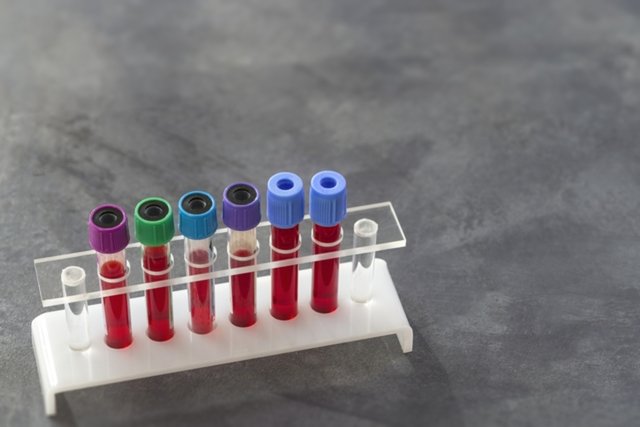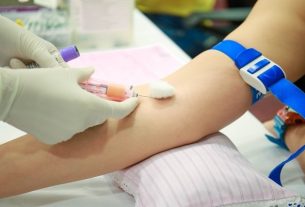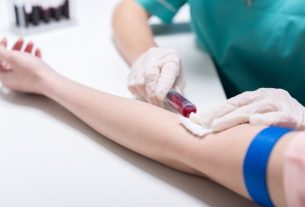The coagulogram is a set of blood tests requested by the doctor to evaluate the blood clotting process, identifying any changes and thus indicating treatment to avoid complications.
This exam is mainly requested before surgery to assess the patient’s risk of suffering bleeding during the procedure.
The coagulogram consists of several tests, such as bleeding time, prothrombin time, activated partial thromboplastin time, thrombin time and assessment of the number of platelets, which are essential for evaluating blood clotting.

What is it for
The coagulogram serves to assess the presence of all factors involved in blood clotting and, consequently, hemostasis, which corresponds to the processes that occur within the blood vessels that aim to keep the blood fluid in order to avoid the formation of clots or hemorrhage. . Understand everything about hemostasis.
Thus, the coagulogram may be indicated before surgery, but it may also be requested by the doctor to investigate the cause of hematological diseases and check the risk of thrombosis, especially in women who use contraceptives.
Furthermore, the coagulogram is indicated after the bite of an animal that has a toxin that can interfere with the clotting process and in the monitoring of people who use anticoagulants, such as Heparin and Warfarin, for example. Learn about other anticoagulants and when they are indicated.
How is done
The coagulogram must be done with the person fasting for 2 to 4 hours and consists of collecting a blood sample that is sent for analysis, with the exception of the Bleeding Time (TS), which is done on the spot and consists of observing the time it takes for the bleeding to stop.
It is important that the use of anticoagulant medications is informed before carrying out the exam, as this may interfere with the result or be taken into consideration at the time of analysis, for example. Therefore, it is important to have your doctor’s advice regarding discontinuing the use of the medication before carrying out the coagulogram.
Coagulogram exams
The main tests present in the coagulogram are:
1. Bleeding time (TS)
Bleeding time, or TS, is useful for detecting any changes in platelets and is done by making a small hole in the ear, which corresponds to the Duke technique, or by making a cut in the forearm, called the Ivy technique. , and then counting the time in which the bleeding stops.
Using the TS result, it is possible to evaluate hemostasis and the presence or absence of von Willebrand factor, which is a factor present in platelets that plays a fundamental role in the blood clotting process.
How to understand the result: If the examination was carried out using the Ivy Technique, which is the arm technique, the normal bleeding time is between 6 and 9 minutes. In the case of the Duke technique, which is the ear technique, the normal bleeding time is between 1 and 3 minutes.
When the time is longer than the reference time, it is said in the extended TS exam, indicating that the clotting process took longer than normal, which may be indicative of von Willebrand disease, use of anticoagulant medications or thrombocytopenia, which is a decrease in number of platelets.
2. Prothrombin Time (PT)
Prothrombin, also known as Coagulation Factor II, is a protein that is activated during the clotting process and whose function is to promote the conversion of fibrinogen into fibrin, forming the secondary or definitive platelet plug.
This test aims to verify the functioning of the extrinsic coagulation pathway, as it consists of evaluating the time it takes for the blood to form the secondary plug after exposure to calcium thromboplastin, which is the reagent used in the test.
How to understand the result: Under normal conditions, after blood comes into contact with calcium thromboplastin, clotting takes place between 10 and 14 seconds.
However, in some situations the coagulogram detects extended PT, which means that the activation of prothrombin takes place longer than normal. Increased PT values usually occur in the case of anticoagulant use, vitamin K deficiency, factor VII deficiency and liver problems, for example, as prothrombin is produced in the liver.
In rare cases, PT may be reduced, as in the case of using a vitamin K supplement or contraceptive pills with estrogen, for example. Understand more about the results of the Prothrombin Time test.
3. Activated Partial Thromboplastin Time (APTT)
This test is also used to evaluate hemostasis, however it allows the presence or absence of coagulation factors present in the intrinsic pathway of the coagulation cascade to be verified.
APTT is normally important to monitor patients who use Heparin, which is an anticoagulant, or who have blood clotting problems, being useful for identifying changes related to clotting factors.
In this test, a sample of collected blood is exposed to reagents and then the time it takes for the blood to clot is calculated.
How to understand the result: Under normal conditions, the APTT is 21 to 32 seconds. However, when the person uses anticoagulants, such as heparin, or has a deficiency of specific factors of the intrinsic pathway, such as factors XII, XI or VIII and IX, which are indicative of hemophilia, the time is normally longer than the reference time. , with the examination indicating that the APTT is extended. Check out more details about the TTPA result.
4. Thrombin Time (TT)
The thrombin time corresponds to the time required for the clot to be formed after the addition of thrombin, which is the necessary coagulation factor for the activation of fibrinogen into fibrin, which guarantees the stability of the clot.
This test is very sensitive and is carried out by adding thrombin in low concentrations to the blood plasma, with the clotting time being influenced by the amount of fibrinogen present in the plasma.
How to understand the result: Normally after adding thrombin to the plasma, the clot forms between 14 and 21 seconds, which is considered the reference value and may vary according to the laboratory in which the test is performed.
TT is considered prolonged when the person uses anticoagulants, has fibrin degradation products, is deficient in factor XIII or fibrinogen, for example.
5. Number of platelets
Platelets are fragments of cells present in the blood that play an essential role in hemostasis, as they contain important factors for the clotting process, such as von Willebrand factor, for example.
How to understand the result: The normal amount of platelets in the blood is between 150,000 and 450,000 /mm³. Values lower than the reference are indicated in the exam as thrombocytopenia, indicating that there are fewer platelets circulating, which can result in blood clotting problems, favoring bleeding, in addition to being indicative of nutritional deficiencies, changes in the bone marrow or infections, for example.
Values above the reference are called thrombocytosis, which can result in excessive clotting, which can happen due to lifestyle habits, such as smoking or alcoholism, for example, or due to pathological conditions, such as iron deficiency anemia, myeloproliferative syndrome and leukemia, for example. Learn about other causes of increased platelets.

Sign up for our newsletter and stay up to date with exclusive news
that can transform your routine!
Warning: Undefined array key "title" in /home/storelat/public_html/wp-content/plugins/link-whisper-premium/templates/frontend/related-posts.php on line 12
Warning: Undefined array key "title_tag" in /home/storelat/public_html/wp-content/plugins/link-whisper-premium/templates/frontend/related-posts.php on line 13



